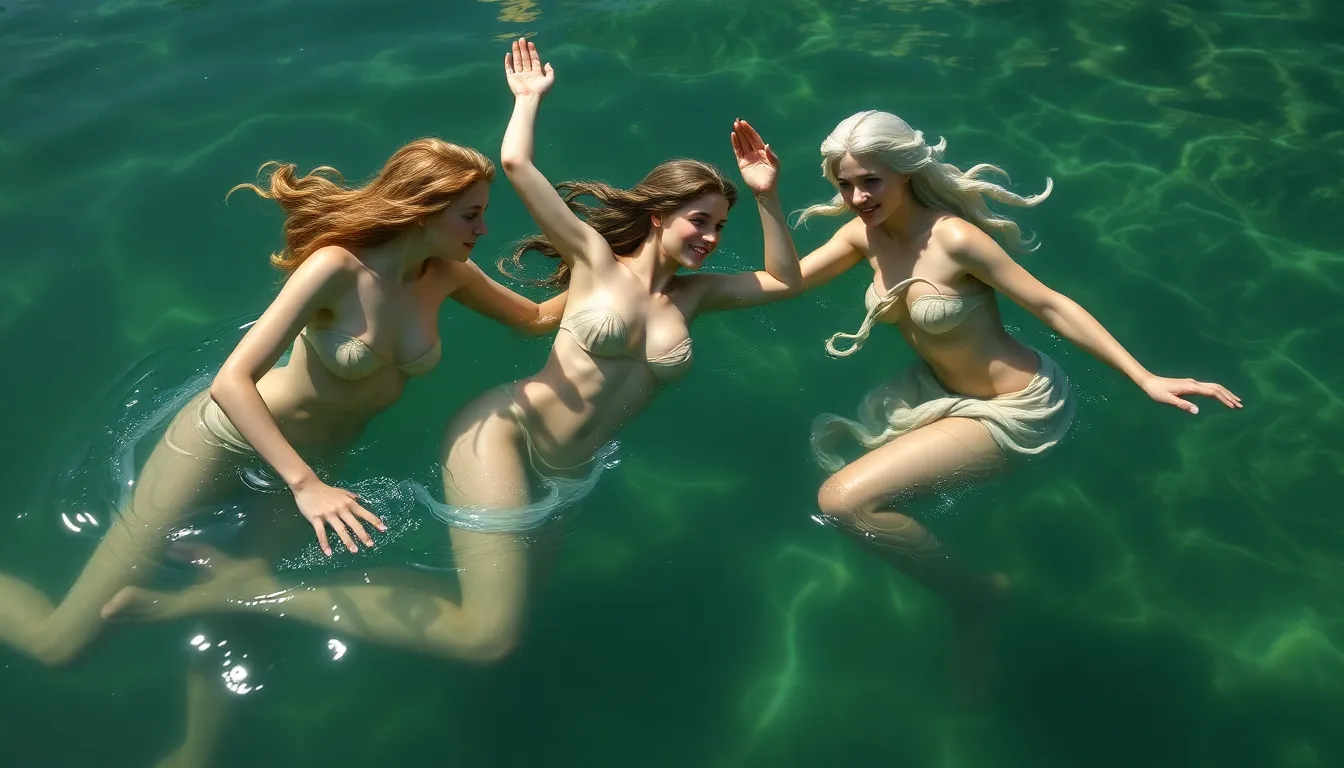Water Nymphs: The Nereids and Naiads of Greek Mythology Explained
I. Introduction to Water Nymphs in Greek Mythology
In the rich tapestry of Greek mythology, nymphs hold a special place as divine spirits associated with nature. These enchanting beings are often depicted as beautiful maidens, embodying the essence of the natural world. Water nymphs, in particular, are divided into two primary categories: the Nereids and the Naiads. Each group has its own unique characteristics and significance within the mythological framework.
II. The Nereids: Guardians of the Sea
The Nereids are sea nymphs who are often considered the guardians of the ocean. They are known for their beauty, grace, and their connection to the waters of the Mediterranean Sea. The Nereids are typically depicted as lovely young women, each possessing unique attributes and personalities.
The family lineage of the Nereids traces back to Nereus, the old man of the sea, and Doris, a daughter of the Ocean. Together, they had fifty daughters, each known as a Nereid. This large family of nymphs symbolizes various aspects of the sea and its nature.
Notable Nereids and Their Attributes
- Thetis: The most famous Nereid, known for her role as the mother of Achilles and her deep connection with the gods.
- Amphitrite: The queen of the sea, wife of Poseidon, and protector of sailors.
- Galatea: A beautiful Nereid who was loved by the Cyclops Polyphemus but was in love with the mortal Acis.
- Psamathe: Known for her beauty and her connection to the sands of the beach.
- Hippo: A Nereid known for her swiftness and agility in the water.
III. The Naiads: Spirits of Freshwater
Naiads are the freshwater nymphs, associated with springs, rivers, lakes, and other bodies of freshwater. They are typically depicted as young and beautiful, embodying the purity and vitality of fresh water. Unlike the Nereids, the Naiads are closely linked to specific geographical locations.
There are different types of Naiads, each connected to a specific source of freshwater:
- River Naiads: Nymphs that inhabit rivers and streams.
- Spring Naiads: Spirits of springs, known for their healing properties and life-giving waters.
- Lake Naiads: Nymphs associated with lakes, often believed to possess magical qualities.
Naiads played a significant role in local mythology and culture, often being depicted as protectors of their waters and the life forms that depended on them.
IV. Symbolism and Roles of Water Nymphs
Water nymphs, including both Nereids and Naiads, symbolize various aspects of nature, particularly fertility and the life force of water. They are often seen as embodiments of the nurturing and life-giving properties of water, making them essential figures in ancient Greek culture.
In art and literature, water nymphs are represented in various ways:
- As helpers to gods and heroes, providing guidance and assistance.
- As protectors of nature, safeguarding their respective waters from harm.
- As adversaries, sometimes luring mortals to their doom with their beauty.
V. Famous Myths Involving Nereids and Naiads
Water nymphs appear in numerous myths throughout Greek mythology, often intertwined with the tales of gods and heroes.
Key Myths Featuring Nereids
- Thetis and Achilles: Thetis, a Nereid, played a crucial role in the Trojan War by aiding her son Achilles.
- Galatea and Polyphemus: The tragic love story between the beautiful Nereid and the Cyclops.
Naiads in Popular Myths
- Daphne and Apollo: The story of the Naiad who transformed into a laurel tree to escape the advances of Apollo.
- Arethusa: A Naiad who was pursued by the river god Alpheus and transformed into a spring.
The interplay between Nereids, Naiads, gods, and heroes often highlights the delicate balance between humanity and nature.
VI. Water Nymphs in Ancient Greek Art and Literature
Water nymphs have been depicted in various forms of ancient Greek art, from pottery to sculptures and paintings. These representations often emphasize their beauty and connection to water.
In classical literature, nymphs are frequently mentioned:
- Homer: References to Nereids in the “Iliad” and “Odyssey”.
- Ovid: The “Metamorphoses” features numerous stories about Naiads and their interactions with mortals.
Their influence extends beyond ancient times, impacting later artistic movements and inspiring countless works throughout history.
VII. Modern Interpretations and Cultural Impact
In contemporary culture, there has been a revival of interest in nymphs, reflecting themes of nature and femininity. Water nymphs, particularly Nereids and Naiads, have found their way into modern literature, film, and art.
Some of the ways they are represented today include:
- As characters in fantasy novels and films, often symbolizing the mystical aspects of nature.
- Artistic interpretations that highlight environmental themes and water conservation.
VIII. Conclusion: The Enduring Legacy of Water Nymphs
The Nereids and Naiads of Greek mythology continue to hold significance in our understanding of the natural world. Their stories reflect the ancient Greeks’ reverence for water and nature, serving as metaphors for life, fertility, and the interconnectedness of all beings.
As we reflect on their enduring legacy, it becomes clear that water nymphs symbolize not just the beauty of nature but also our responsibility to protect it. Their tales remind us of the importance of ecological balance and the preservation of our precious water resources.




